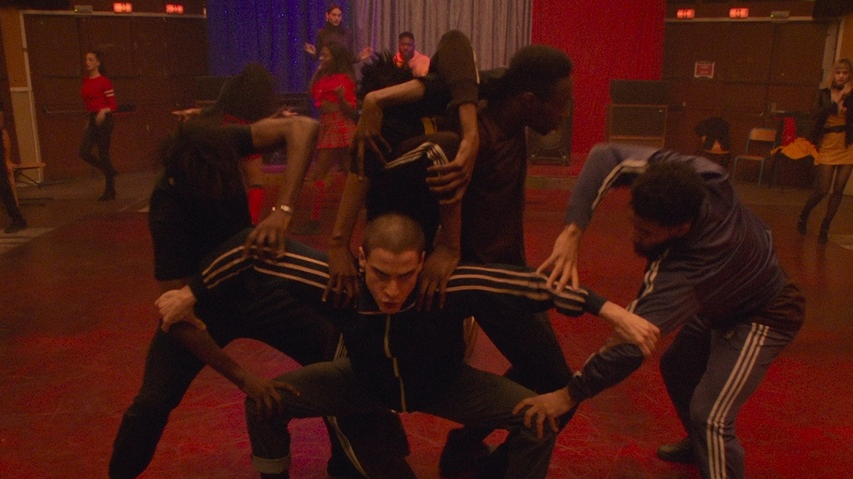november 2023
Gaspar Noé is a freak. His 2015 film, “Love,” is a 3D porno. “Irreversible” (2002) features multiple still-shots of brutal violence. “Into the Void” (2009) enters the human vagina. And “Climax,” the subject of this review, takes the viewer on a trip. Literally.
Directed, written, and co-edited by Noé, “Climax” premiered at the Cannes Film Festival in 2018. The film centers around a French dance troupe on the eve of their first tour across America. The group celebrates its new success with dancing, music, and copious amounts of sangria made by Emmanuelle (Claude Gajan Maull), a woman who was forced to end her dancing career due to her elementary-aged son. The troupe quickly discovers that the drinks have been spiked with LSD, though, creating a club-kid-murder-mystery out of the seemingly joyous night.
Though they all share their talent in dancing, Selva (Sofia Boutella) makes herself known as the leader of the group. The camera mainly follows her experiences throughout the night, though it makes calculated pitstops to show the disturbing events that occur to characters like Shirley (Ashley Biscette), Lou (Souhelia Yacoub), and Tito (Vince Galliot Cumant).
The cinematography and editing of the film also play major roles in Noé’s deliberate storytelling choices. At the discretion of cinematographer Benoît Debie, the camera spins around the dancers as they vogue, much like the records that DJ “Daddy” (Kiddy Smile) plays for the group. The camera flips upside down as the characters begin to trip, signifying a turn against the natural with nothing “normal” to follow. Parallel editing, when simultaneous scenes alternate, peeks into conversations between the dancers–and reveals important information about the relationship dynamics in the group. The viewer unknowingly starts to decipher the mystery even before the punch is spiked.
Noé’s casting choices for the film relied solely on how charismatic the dancers were. He did not care about their acting abilities, their ages, or their genders. He wanted to make a film about dancers with the best dancers that he could find. And he did just that, with the help of choreographer Nina McNeely. Only two days prior to shooting, McNeely had to gather the twenty dancers (each trained in a different style) and rehearse the two excruciatingly long dance scenes that open the film. On top of that, none of the dancers had ever been on drugs, so she had to teach them how to physically look as if they were tripping. And to make matters even worse, she could not speak French.
Despite everything that seemed to be set up against her, McNeely managed to create two of the most dynamic choreographed scenes of all time. Though long, the scenes are luxuriously full of cast interaction and energy. They serve an important role in the story and reveal layers of relationships that would otherwise be unseen. The personality of each dancer can be felt in their movements, which serve as important pieces of character-building–there is not one spin that feels out of place or unnecessary.
A defining feature of the movie’s style is that it does not force the viewer to see what the characters do in their hallucinogenic haze. Instead, the viewer must decide for themselves what is so terrifying about their trip. Noé does not rely on gore or the cheap gimmick of a simulated trip to deliver his message, as “Climax” does not display any images that are particularly harrowing — unless they are rooted in reality. It is a film about a party drug, but it almost feels more like a warning, a developer of the anxiety that already runs deep among the human race. Fear what you do not know, and avoid what you cannot see.

Leave a comment